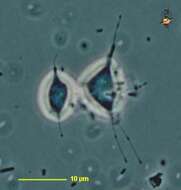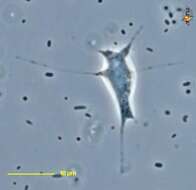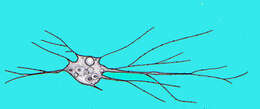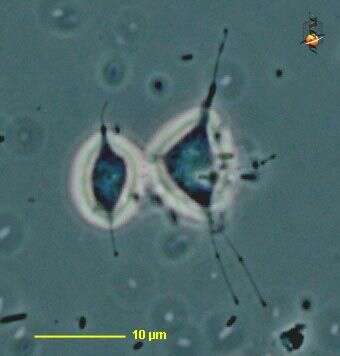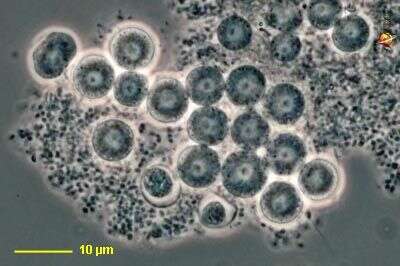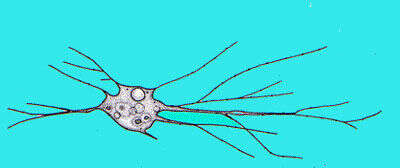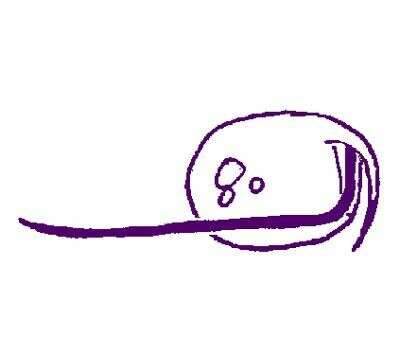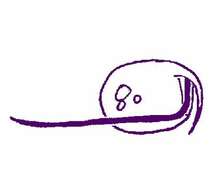-
Gymnophrys (jim-noff-riss), small amoeboid cell of uncertain affinities. With fine granular pseudopodia extending from the cell which often adopts a spindle shape. There are two very short flagella, but they cannot be seen with the light microscope. Two cells. Phase contrast.
-
Gymnophrys (jim-noff-riss), small amoeboid cell of uncertain affinities. With fine granular pseudopodia extending from the cell which often adopts a spindle shape. There are two very short flagella, but they cannot be seen with the light microscope. Phase contrast.
-
Gymnophrys (jim-noff-riss), small amoeboid cell of uncertain affinities. With fine granular pseudopodia extending from the cell which often adopts a spindle shape. There are two very short flagella, but they cannot be seen with the light microscope. Cysts. Phase contrast.
-
-
Quadricilia rotundata (Skuja, 1948) V+rs, 1992. Cells are 5-9 x 10-15 microns, globular cells 10-20 microns in diameter. Cell globular, or nearly so, with 4 (-8) unequal, smooth, acronematic flagella inserted anteriorly in a shallow depression. The flagella are 1-3 times the diameter of the cell body. Many thin, branched pseudopodia may be produced from any point of the cell surface. Cytoplasm sometimes highly vesiculate, nucleus central or in the cell anterior.
-
Cyranomonas is a biflagellated colourless protist of unknown affinities. Cells are ovoid, 4.5 - 5 µm long, dorso-ventrally flattened, and somewhat flexible. The anterior part is depressed of concave. Two thickened flagella emerge from the right side of the cell and are not acronematic. The anterior flagellum is about the length of the cell and flickers stiffly forwards. The posterior flagellum inserts to the left of the anterior flagellum, is 1.5 the length of the cell, and trails behind the cell. The nucleus is located anteriorly. The cells contain small food materials. The cells glide slowly with the anterior flagellum. C. australis is currently the only species in the genus, which has so far only been reported from Australia.

